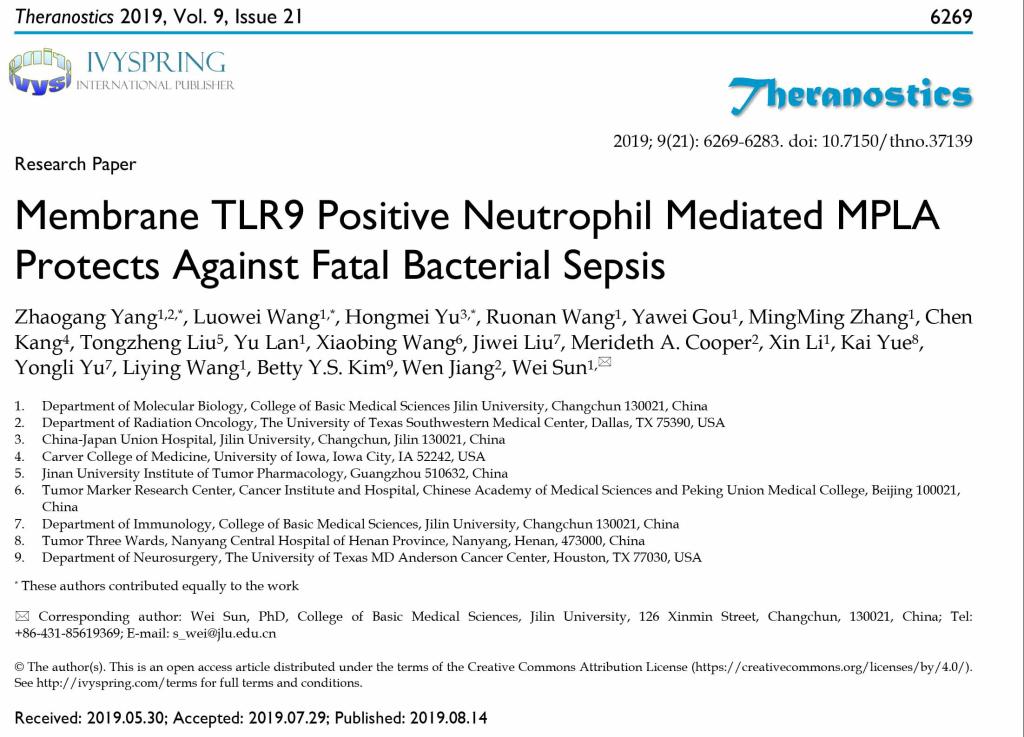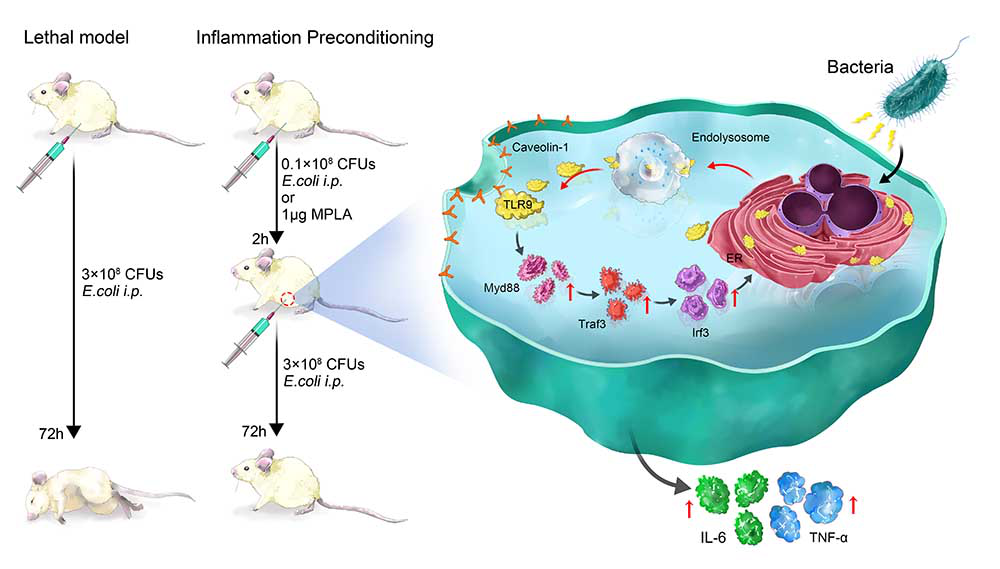This study showed that both peripheral blood neutrophil (PMN) of human and mice express cell membrane TLR9 (membrane TLR9, mTLR9), and this type of PMN is called mTLR9 positive PMN (mTLR9 positive PMN, mTLR9+PMN). At present, the role and mechanism of mTLR9+PMN in inflammation are still unclear.
Recently, the team of Professor Wei Sun from our hospital published a paper in Theranostics (2018 IF: 8.063), which is one of the top journals of biomedicine, reporting that monophosphoryl lipid A (MPLA)-induced mTLR9+PMN has an protective effect on sepsis, which will avoid the excessive inflammation for the body and provide new detection indicators for the diagnosis, treatment and prognosis of severe inflammatory diseases.

The research group induced a mouse sepsis model by injecting Escherichia coli. During the toxic drug screening process, they found that a small dose of intraperitoneally injected Escherichia coli helped mice to resist the lethal E. coli attack. This resistance can be obtained 2 hours after injection of a small dose of E. coli, and all mice injected a lethal dose of E. coli survived. This suggests that the injection of small doses of E. coli caused a pre-conditioning in mice. For this preconditioning appeared in animal models of acute inflammation, the phenomenon was named E. coli-induced "inflammatory preconditioning", or "inflammation pre-conditioning" (inflammation pre-conditioning, InP) for short.
In this study, the researchers isolated the active ingredients of Escherichia coli and found that the attenuated chemically modified lipopolysaccharide-MPLA can induce InP protection in a mouse sepsis model. Adoptive transfer through flow cytometric sorting experiments and related experiments in gene knockout mice revealed that mTLR9+PMN is the key target cell for the protective role of InP. Application of fluorescence resonance energy transfer experiments showed that MPLA triggered TLR9 to undergo cell membrane translocation and then coupled to the cell membrane caveolin-1 (CAV-1), and then determined the binding site of CAV-1 and TLR9. At the same time, TLR9 promotes the TRAF3 and IRF3 signal transduction pathway mediated by MyD88, releasing the cytokines IL-6 and TNF-α. In addition, examination of blood samples of patients with sepsis in different clinical stages showed that the prognostic effect of patients is closely related to the expression of TLR9 and CAV-1 on the PMN surface of their peripheral blood.

This study suggests that mTLR9+PMN is of great significance to prevent the occurrence of excessive inflammation through mTLR9/Cav-1/MyD88/TRAF3/IRF3 signaling pathway. This discovery provides new detection indicators and treatment ideas for clinically severe inflammatory diseases.
Reference:
Yang Z, Wang L, Yu H, Wang R, Gou Y, Zhang M, Kang C, Liu T, Lan Y, Wang X, Liu J, Cooper MA, Li X, Yue K, Yu Y, Wang L, Kim BYS, Jiang W, Sun W. Membrane TLR9 Positive Neutrophil Mediated MPLA Protects Against Fatal Bacterial Sepsis. Theranostics. 2019; 9(21): 6269-6283.
Original Paper Link:https://www.ncbi.nlm.nih.gov/pubmed/31534550